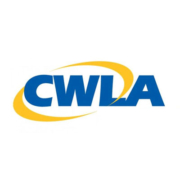Back to Basics

Why the fundamentals in child welfare matter
Over 30 years ago, when I first began my work in public child welfare, I wanted nothing more than to see the children and families I worked with thrive at home in their own communities. I wanted children to be safe and for parents to have the capacity to focus on their family’s well-being. I recall going off to training to learn all the essentials to doing this work – mostly policy, case planning, interviewing skills, and documenting my work as a practitioner. In other words, the basics. All practical information, but the real learning for me came when I returned to the office and began to work with an experienced colleague in the field. The truth is, that’s when the lightbulb went off on just how meaningful this work is to the families we serve.
This “on-the-job” part of the training allowed me to observe an experienced case manager as they engaged families on their caseloads in the field. I spent several days in the field, watching and learning – case after case. As we drove between visits, I was able to ask questions and share my thoughts on what I was experiencing. I did not feel that I was in the way or a burden to the other worker. It was all part of the discovery process I went through as a new public child welfare worker, and the beginning of what we would later refer to as “mastery of the craft.”
I received no new cases while in core training and maybe one or two new cases within my first month on the job. That was 1990. Much has changed since then.
“It was all part of the discovery process I went through as a new public child welfare worker and the beginning of what we would later refer to as ‘mastery of the craft.’
In 2017, a year before I retired from state government, I oversaw child welfare programs across the state, as well as our central office—nearly 3,500 staff on our child welfare side and close to 14,000 children in care. The work was overwhelming for our supervisors and case managers. We dealt with the same issues that many states do – high turnover, heavy workloads, and families in crisis. While we were getting case managers into training as fast as possible, it was hard to keep up with the turnover at the practitioner level. I am not sure our case managers at that time could afford the opportunity to shadow experienced staff like we were able to do back in the early 90s, and it’s challenging to learn when many new case managers assumed at least a small caseload right out of training. Our story was not unique. This was a trend across the U.S.
Since I retired from public child welfare, there has been a renewed discussion about how we can “reimagine” or “reinvent” our child welfare system. As someone who has been through several child welfare reform efforts at the state level, this is no small undertaking. Is this a critical discussion? Yes. Do we need to approach the work differently? Sure. Can dialogues about reimagining, reinventing, and reform overwhelm states and jurisdictions that are already struggling with engaging staff and fundamental practice issues? Absolutely.
There is no doubt that we must approach the work differently in child welfare. There are still too many children and families in need, too many youth in congregate care, and too many of our line supervisors and case managers overwhelmed and facing burnout. There are never easy answers to any of these challenges. But before we can take some of the bolder steps that are needed, we need to decide how to support states and jurisdictions in a way that allows them to focus on the basics first. The fundamentals of child welfare – partnering with families, purposeful contacts with children and parents, timely response to children who may be in danger, effective case planning, and service delivery. The things that, if we don’t get them right, nothing else matters.
Why the Basics Matter
We sometimes overexplain and complicate the work in child welfare to the point that it distracts us from our ability to commit to the core functions needed to support families and protect children.
“When it comes to practice, the basics should be the center of our work. In other words, if we aren’t getting our core mission with families right, nothing else really matters”.
Indeed, critical conversations about system reform across the country are necessary and long overdue, especially around systemic racism and disproportionality in child welfare. Still, a strong focus on the fundamentals at the state and organizational level is a way to simplify, demystify and keep the work real for the practitioners in the field every day. When it comes to practice, the basics should be the center of our work. In other words, if we aren’t getting our core mission with families right, it’s difficult to move forward. Suppose we break down the basics and focus on areas such as purposeful contacts, assessments, meaningful case plans, and equitable service delivery. In that case, it provides a level of consistent practice across organizations. Consistent practice also supports efforts around the Child and Family Services Review (CFSR), and when the fundamentals are strong, organizations can weather storms and make challenges more manageable.
The Child and Family Services Review
With 30 years in public child welfare, I have certainly heard my share of criticism of the Child and Family Services Review (CFSR). It’s a common topic of discussion among child welfare leaders. While not a perfect review process, the CFSR may provide the best opportunity to shape our work around the fundamentals in child welfare. With Round 4 beginning in 2022, states and jurisdictions will be able to take advantage of experience from previous rounds and structure efforts on the basics of our work, leveraging several key practice area opportunities. These opportunities might include comprehensive assessments, quality visits, and supervisory oversight, which apply to all cases and have the potential to positively impact ALL CFSR Items, with the most significant impact on Items 2, 3, 12, 14, and 15.
Supervisory oversight is often overlooked but critical to ensuring that case documentation is reviewed thoroughly and that case directives are based on current case circumstances and are followed up on timely by case managers.
Perhaps among the most essential of child welfare principles is stakeholder engagement and being a true partner to families. Ongoing, meaningful stakeholder engagement, especially with youth in care, parents, placement resources, and the legal community, will always give us the best opportunity for positive outcomes.
The Data Mistake – Production Pressure
Another great advantage of focusing on the basics of child welfare is they can be measured quantitatively and qualitatively. But we often see leaders and managers negatively approaching the use of data, creating what might be referred to as production pressure around critical metrics. Throughout my career, I have certainly experienced what I would call the data mistake when we create too much pressure around the numbers, resulting in staff losing sight of our core mission and creating an environment of fear. Still, leaders in child welfare are always vulnerable to being faulted for using data punitively, and it can become all too easy for supervisors and managers to rely on this vulnerability to avoid accountability for this critical work with families. Child welfare data should be used for decision making, forecasting and lead to the development of great questions – questions that inspire the hearts and minds of staff to explore what might be possible.
Casey Family Programs provides a great resource for developing leadership performance dashboards. I recommend reviewing this with staff as you develop a strategy for data utilization in your child welfare programs.
Final Thoughts
When I oversaw child welfare programs in a state system, I often worried that we expected too much from supervisors and case managers. I think we do, and it’s easy to see why. In the ever-changing and complex world of public child welfare, it sometimes feels like we lose our way. And with a revolving door of leaders at the state level, it can become overwhelming for supervisors and case managers who just want to get through the week without yet, another change in direction. Staff at the practitioner level need leaders to create the space for learning when it comes to engaging families as true partners. The best way to do this is to commit to the basics first… to ground our work in the fundamentals and stick with it. When we have the fundamentals down, families are better off, children are safer, and it creates a pathway for staff to develop more advanced skills in child welfare. Nothing could be more important than the process of discovery. That’s how amazing things happen.
Let’s continue the conversation.
Contributing Author:
Jeff Lukich is a Senior Director and Child Welfare Strategy and Practice Lead at DLH Corporation. Previously, he served 30 years with the Georgia Division of Family and Children Services overseeing all programs for the organization, including child welfare. He retired in 2018 as the Division’s Chief of Staff.













Leave a Reply
Want to join the discussion?Feel free to contribute!